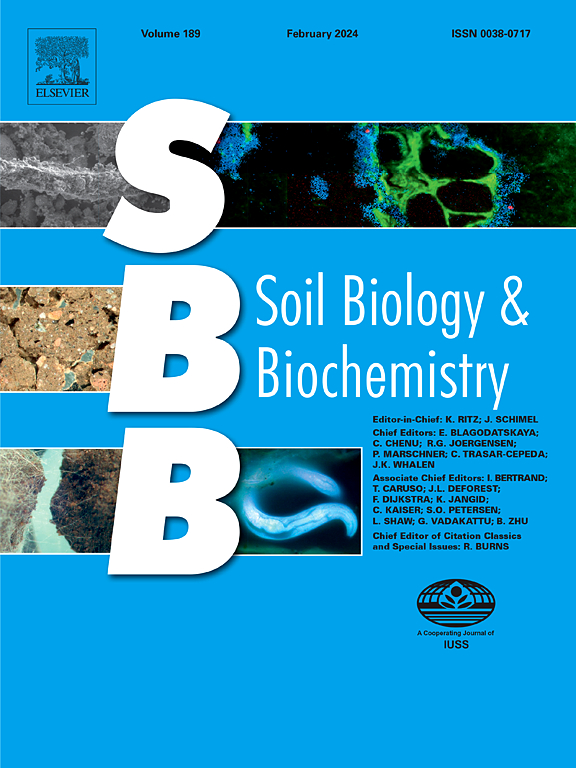High soil salinity reduces straw decomposition but primes soil organic carbon loss
IF 9.8
1区 农林科学
Q1 SOIL SCIENCE
引用次数: 0
Abstract
Straw incorporation is a widely recommended agronomic practice to increase organic carbon (C) in saline soil. The mechanism of straw induced priming effect (PE) on soil organic matter (SOM) decomposition is likely to be influenced by salinity, which may stimulate microbial processes and enzyme activity because of osmotic stress and nutrient resource limitation. We incubated 13C-labeled straw in soil for 90 d under three salinity levels: low electrical conductivity (EC1:5) of 0.31 dS m−1, medium EC1:5 of 0.97 dS m−1, and high EC1:5 of 1.6 dS m−1). During the first 15 d, the low salinity soil had 31 % greater PE than the high salinity soil, apparently due to microbial preference for labile straw-derived C over SOM under negligible osmotic stress. This trend was reversed from day 30 onward, with medium-and high-salinity soil showing amplified PE (1.1-fold and 1.7-fold increase respectively versus low-salinity control), associated with microbial N limitation (inorganic N dropped more than 16 %) and dominance of copiotrophic taxa: Proteobacteria, Bacteroidota, Ascomycota. High salinity decreased microbial biomass and diversity, and slowed down straw decomposition, which lowered necromass by 13 % and increased plant-derived C by 6.9 % compared to low soil salinity. Quantitative modeling demonstrated linear salinity effects on C cycling - each 1 dS m−1 increase in soil EC1:5 amplified the annual PE by 930 mg C kg−1 soil year−1 and reduced the net C balance by 3.8 g C kg−1 soil. Therefore, high soil salinity enhances SOM loss, while increase in straw-derived C primarily comes from plant-derived C rather necromass C. Our findings make the connection between soil salinity and C dynamics in straw-remediated saline soil, which is linked to the C sequestration potential of saline lands.


求助全文
约1分钟内获得全文
求助全文
来源期刊

Soil Biology & Biochemistry
农林科学-土壤科学
CiteScore
16.90
自引率
9.30%
发文量
312
审稿时长
49 days
期刊介绍:
Soil Biology & Biochemistry publishes original research articles of international significance focusing on biological processes in soil and their applications to soil and environmental quality. Major topics include the ecology and biochemical processes of soil organisms, their effects on the environment, and interactions with plants. The journal also welcomes state-of-the-art reviews and discussions on contemporary research in soil biology and biochemistry.
 求助内容:
求助内容: 应助结果提醒方式:
应助结果提醒方式:


